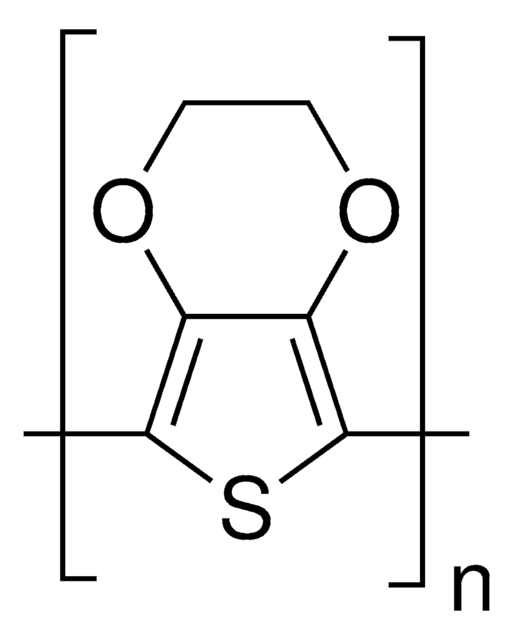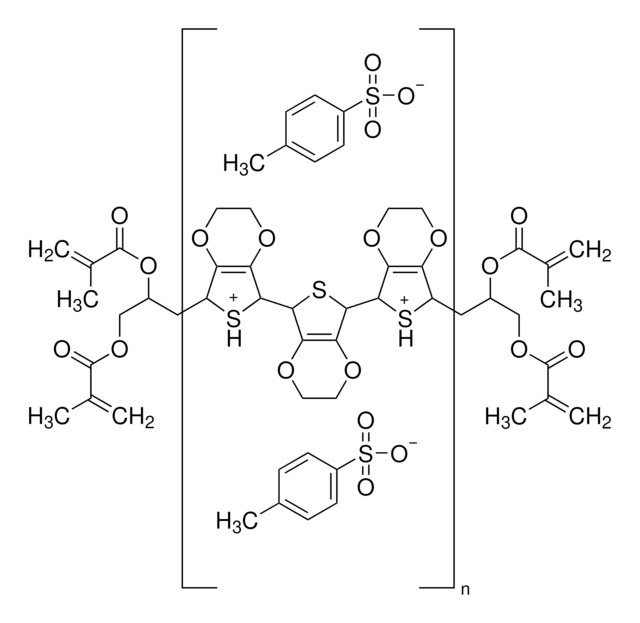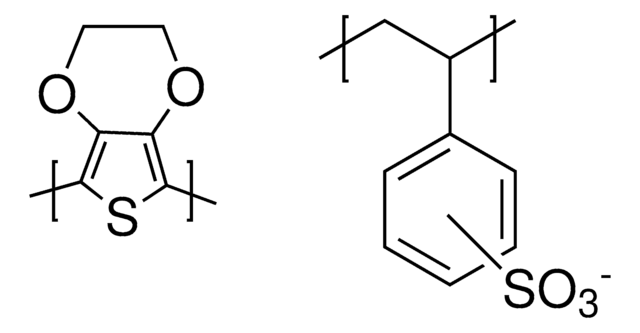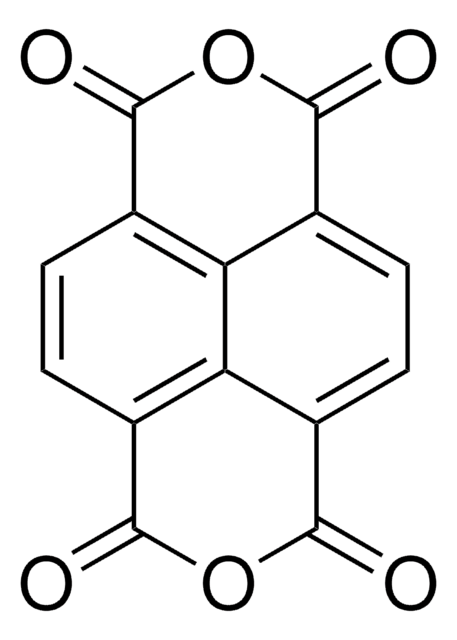649813
PEDOT
tetramethacrylate end-capped solution, 0.5 wt. % (dispersion in propylene carbonate), contains p-toluenesulfonate as dopant
Synonym(s):
Oligotron™ PC, PEDOT, PEDOT, tetramethacrylate end-capped
About This Item
Recommended Products
Product Name
Poly(3,4-ethylenedioxythiophene), tetramethacrylate end-capped solution, 0.5 wt. % (dispersion in propylene carbonate), contains p-toluenesulfonate as dopant
mol wt
~1,360-1,600 g/mol (methacrylate equivalent weight)
average Mn ~6,000(lit.)
Quality Level
contains
p-toluenesulfonate as dopant
composition
Oligotron™ tetramethacrylate, 0.5 wt. %
propylene carbonate, 99.5 wt. %
concentration
0.5 wt. % (dispersion in propylene carbonate)
resistance
1-10 M Ω/sq (typical surface resistance of film)
conductivity
0.1-0.5 S/cm (bulk)
density
1.189 g/mL at 25 °C
Looking for similar products? Visit Product Comparison Guide
Related Categories
General description
Application
Features and Benefits
Caution
Legal Information
signalword
Warning
hcodes
pcodes
Hazard Classifications
Eye Irrit. 2
Storage Class
10 - Combustible liquids
wgk_germany
WGK 2
flash_point_f
269.6 °F - closed cup
flash_point_c
132 °C - closed cup
Choose from one of the most recent versions:
Already Own This Product?
Find documentation for the products that you have recently purchased in the Document Library.
Customers Also Viewed
Articles
Conjugated polymers offer charge transport between inorganic, electrically conducting metals and organic, proton-conducting biological systems.
Progress in Organic Thermoelectric Materials & Devices including high ZT values of >0.2 at room temperature by p-type (PEDOT:PSS) & n-type (Poly[Kx(Ni-ett)]) materials are discussed.
The application of conducting polymers at the interface with biology is an exciting new trend in organic electronics research.
Global Trade Item Number
| SKU | GTIN |
|---|---|
| 649813-25G | 4061833599839 |
Our team of scientists has experience in all areas of research including Life Science, Material Science, Chemical Synthesis, Chromatography, Analytical and many others.
Contact Technical Service








